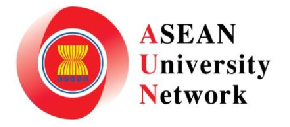
Abstract
Prompted by the recent boom of zine-making and the active participation of youth in the local art scene, this paper is focused on determining the role of zines in the lives, culture of creation, and community engagement of young adults (YAs) and creating a typology based on the coming-of-age themes presented in fiction and nonfiction zines created by students at Philippine High School for the Arts (PHSA). To do so, the researcher collected zines from various events and expos, chose zines written by YAs (PHSA students in particular), conducted focus-group and individual interviews among the authors, and performed content analysis on all the materials collected. The results indicate that zines are used for self-expression, community building, and self-publishing. Moreover, themes such as permanence versus transience, relationship-building, nostalgia, language as a shaper of identity, and acts of subversion are common among coming-of-age narratives. Finally, this study was able to conclude that YA zines are a form of counter-storytelling, provide an alternative creative community to the youth, and act as a means for sociological theorizing, all of which are necessary functions for enriching creative communities among the youth.
References
Alsup, J. (2010). Identification, Actualization, or Education: Why Read YAL? In J. Alsup (Ed.), Young Adult Literature and Adolescent Identity Across Cultures and Classrooms: Contexts for the Literary Lives of Teens, (pp. 1-16). New York: Routledge.
Banzon, C. (2015, August 24). Metro Manila's zine culture in 10 quick points. Retrieved from Coconuts Manila:
https://coconuts.co/manila/features/metro-manilas-zine-culture-10-quick-points/
Berg, B. L. (2001). Qualitative research methods for the social sciences. Needham Heights, MA: Allyn & Bacon.
Bongato, I. L., & Ting, J. P. (2014, August 20). Bringing the genre home.
http://www.theguidon.com/1112/main/2014/08/bringing-genre-home/
https://pubmed.ncbi.nlm.nih.gov/20212260/
Cabral, A. (2017, August 30). How the zine can be a tool for social change.
http://cnnphilippines.com/life/culture/literature/2017/08/30/zine-making-adam-david.html
Cabral, A., & Ledesma, I. (2016, December 19). The power of the small press: On self-publishing in the digital age.
http://cnnphilippines.com/life/culture/literature/2016/12/19/bltx-adam-david.html
https://www.jstor.org/stable/29767022
http://www.jstor.org/stable/20866409
deGravelles, K. H., Bach, J., Hyde, Y., Hebert, A., Hale, D., Cavanaugh, A., & Kimbrough, M. (2012). Novelzine: Reading and Writing Community. The English Journal, 101(4), 55-63.
http://www.jstor.org/stable/41415474
Deleuze, G., & Guattari, F. (2003). Kafka: Toward a minor literature. Minneapolis: University of Minnesota Press.
Doll, J. (2012, April 26). The ongoing problem of race in Y.A.
https://www.theatlantic.com/entertainment/archive/2012/04/ongoing-problem-race-y/328841/
https://ejournals.ph/article.php?id=5930
Estrella, F. (2016, April 14). The tactile pleasures of zines.
http://cnnphilippines.com/life/culture/arts/2016/04/14/binding-exhibit.html
https://pubmed.ncbi.nlm.nih.gov/21482981/
Golez, R. (2014, October 23). Herald X - Alternative Music Read n°1 - 1987.
http://philippines80shardcore.blogspot.com/2014/10/herald-x-alternative-music-read-n1-1987.html
Guzzetti, B. J., & Gamboa, M. (2004). Zines for Social Justice: Adolescent Girls Writing on Their Own. Reading Research Quarterly, 39(4), 408-436.
https://www.jstor.org/stable/4151741
https://www.tandfonline.com/doi/abs/10.1080/00405841.2011.584026
Howlett, G. (2015, February 24). Why are so many adults reading YA and teen fiction?
Hughes-Hassell, S. (2013). Multicultural Young Adult Literature as a Form of Counter-Storytelling. The Library Quarterly: Information, Community, Policy, 83(3), 212-228. https://www.jstor.org/stable/10.1086/670696
https://researchoutput.csu.edu.au/en/publications/queering-archives-the-practices-of-zines-3
http://www.csun.edu/~tcb69252/files/ppt/Genres_for_Young_Adult_Literature-1.ppt
https://journals.ateneo.edu/ojs/index.php/kk/article/view/KK2015.02408
http://www.jstor.org/stable/41219799
https://ila.onlinelibrary.wiley.com/doi/10.1002/JAAL.00087
Santoli, S. P., & Wagner, M. E. (2004). Promoting Young Adult Literature: The Other "Real" Literature. American Secondary Education, 33(1), 65-75.
http://www.jstor.org/stable/41064624
https://journals.ateneo.edu/ojs/index.php/kk/article/view/1432
Trupe, A. (2006). Thematic Guide to Young Adult Literature. Westport, Connecticut: Greenwood Press.
Wolk, S. (2009). Reading for a Better World: Teaching for Social Responsibility With Young Adult Literature. Journal of Adolescent & Adult Literacy, 52(8), 664-673. https://ila.onlinelibrary.wiley.com/doi/10.1598/JAAL.52.8.2
Zobl, E. (2009). Cultural Production, Transnational Networking, and Critical Reflection in Feminist Zines. Signs, 35(1), 1-12.
https://www.jstor.org/stable/10.1086/599256
Recommended Citation
Veloso, Reya Mari Soriaga
(2020).
Enriching creative communities through Young Adult (YA) literature: a content analysis of zines from Philippine High School for the Arts.
ASEAN Journal of Community Engagement, 4(1).
Available at: https://doi.org/10.7454/ajce.v4i1.1071
Included in
Children's and Young Adult Literature Commons, Liberal Studies Commons, Reading and Language Commons







